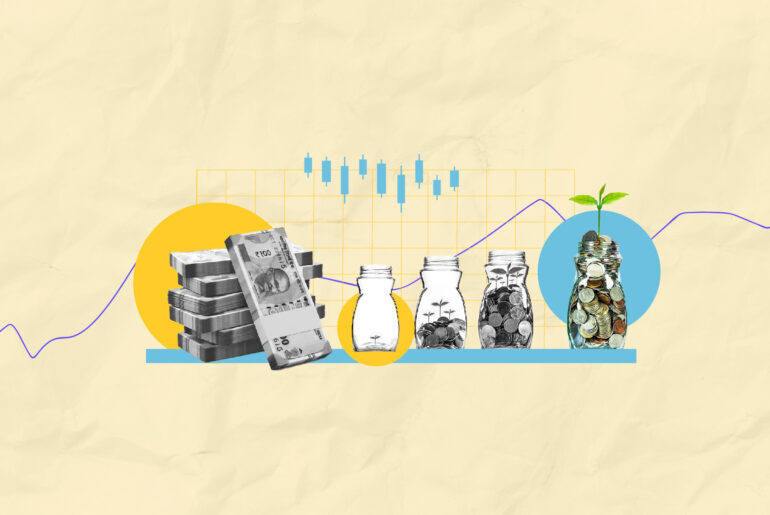Last Updated on Dec 6, 2022 by Aradhana Gotur
The Government of India collects two types of taxes from its residents and businesses on revenue, profits or income. They are direct tax and indirect tax. While direct tax is imposed on taxpayers directly by the government, indirect tax is indirectly imposed on various goods and services that the common man buys.
In this article, let us understand indirect tax.
Table of Contents
What is indirect tax?
The government imposes indirect taxes on its taxpayers for the goods and services they buy. It implies that the onus of paying tax falls on the third party. Unlike a direct tax, indirect taxes are not levied on the income or revenue of individuals and businesses (taxpayers) but on the people who sell the goods and provide the services.
These taxes are passed from person to person depending on who buys the goods or services. Finally, the end consumer of the goods/services has the onus of paying the tax.
In India, there are different types of indirect taxes like the Goods and Service Tax (GST), Excise Tax, Customs Duty, and others.
Indirect taxes are directly tied to the costs of production and rendering services. This means that goods/services that meet necessities attract lower tax rates, whereas luxury items attract higher tax rates.
Example of indirect tax
Assume that the rate of indirect tax here is 10%.
| Particulars | Manufacturer’s cost and tax liability | Retailer’s cost and tax liability |
| Selling price | Rs. 5,000 | Rs. 5,500 |
| Indirect tax @ 10% | Rs. 500 | Rs. 550 |
| Selling price inclusive of the tax | Rs. 5,500 | Rs. 6,050 |
| Tax paid on purchases | – | Rs. 500 |
| Total tax to be paid to the government | Rs. 500 | Rs. 50 |
As seen in the above table, the manufacturer collects Rs. 500 tax on the selling price of Rs. 5,000 from the retailer. Since the manufacturer has not paid any taxes to the government earlier, he will pay the entire Rs. 500 collected from the government.
The retailer will then sell the goods to the end consumer at Rs. 6,050 inclusive of Rs. 550 in taxes. Since the retailer has already paid taxes of Rs. 500 to the manufacturer, they will only pay the balance of Rs. 50 to the government.
In all, the government receives a total tax of Rs. 550 (Rs. 500 from the manufacturer and Rs. 50 from the retailer). The end consumer will pay Rs. 6,050 to the retailer. This is divided into Rs. 5,500 as the selling price and Rs. 550 as taxes. Ultimately, the consumer bears the entire tax liability.
Types of indirect tax
1. Goods and Services Tax (GST)
Before GST, taxpayers paid several types of taxes. This resulted in double taxation and cascading effects of the same. To simplify the process of paying multiple indirect taxes and address the shortcomings, the Central Government of India introduced GST to Indian taxpayers on 1st July 2017.
Ever since most of these indirect taxes now all fall under GST. So taxpayers pay GST as per the various slabs under it. GST is imposed at every point of supply of the good or service.
There are four slabs or categories under GST, as discussed below.
- Central Goods and Services Tax (CGST)
Central Goods and Services Tax replaces almost all the pre-existing taxes that were under the Central Government previously. Cess, excise duties, and central surcharges are now all under CGST. It is mainly levied upon the intra-state movement of goods and services.
- State Goods and Services Tax (SGST)
State Goods and Services Tax (SGST), as the name suggests, is the all-encompassing indirect tax that is collected by the state within its legal boundaries. Taxes like Entertainment tax, State Sales Tax, and VAT, all come under this now.
- Integrated Goods and Services Tax (IGST)
Integrated Goods and Services Tax is levied on interstate transactions or trades between two states of India. It is also sometimes applicable for import and export, where IGST and customs are both paid.
- Union Territory Goods and Services Tax (UTGST)
The last one amongst the slabs of GST is the Union Territory Goods and Services Tax. This tax is applicable to all the transactions of services and goods that happen in the Union Territories of India. This includes Dadra and Nagar Haveli, Daman Diu, The Andaman and Nicobar Islands, Lakshadweep, and Chandigarh.
Note: The Union Territories that have legislature do not have the UTGST. This means that Jammu and Kashmir, Puducherry, and Delhi are all exempt from the UTGST.
Although GST has taken over most of the indirect taxes in India, some services and goods still fall outside of its ambit. They are as follows.
2. Excise duty
This tax has mostly been replaced by GST. But there are still some products on which excise duty is applicable. Petroleum and its byproducts, fuel, and liquor all have excise duty. The excise duty is a tax that is applied when these products leave the warehouses.
3. Customs duty
Customs duty is something that GST cannot replace since it involves international trading. If you have goods that have to be traded with another country, then this tax will be applied to them. In the same way, we have to pay taxes for products that come to our country from somewhere else.
Pre-GST indirect taxes
Before GST, the following types of indirect taxes were imposed:
- Service tax: Imposed on services availed by a customer.
- Excise duty: Charged on the manufacturing of goods like cars.
- Value Added Tax (VAT): Levied on the value added to the price during the sale of goods.
- Stamp duty: Imposed on the sale of immovable property and legal documents.
- Entertainment tax: Charged on transactions related to entertainment like movies, exhibitions and stage shows.
- Anti-dumping duty: Imposed on goods exported at a lower rate than the standard rate by India to the exporting country.
- Octroi: Charged on the goods entering a municipal zone.
- Securities Transaction Tax (STT): Levied at the time of trading securities through Indian stock exchanges.
GST on insurance
As per the latest rates, life insurance premiums attract a GST of 18% on the protection premium or a part of it. Here’s a summary of how GST impacts various types of insurance plan premiums:
| Type of insurance | GST levied on the part of the premium |
| Term insurance | 100% |
| Health insurance | 100% |
| Guaranteed savings plans | 25% in the 1st yr, and 12.5% during the rest |
| Single-premium pension plans | 10% |
| Unit Linked Insurance Plans (ULIP) | Total premium – Investment part |
You can claim GST as a tax deduction in the year of investment.
Advantages of indirect taxes
- Since indirect tax is imposed on goods, products, and services, it is very easy to collect. The MRP of the goods/services includes the indirect tax, so people do not have to calculate how much they owe the government as in case of direct taxes.
- Products like liquor and tobacco, which are harmful to our health, have the highest indirect taxes applied to them. This can encourage limited consumption of these products amongst the population.
- It is difficult to evade indirect taxes as they are now implemented directly through goods and services.
Disadvantages of indirect taxes
- One of the main disadvantages of indirect taxes is that they can be quite regressive. As people from all income brackets have to pay the same taxes for the same products, it becomes tougher for low-income individuals and families.
- If the government increases indirect taxes, the sellers will also increase the prices of their products. Oftentimes, this may lead to inflation in the market.
- Indirect taxes can sometimes become cumulative as middlemen can charge their own taxes in a point-based transaction system. This can inflate the overall price of the product.
- Indirect taxes are levied on raw materials and goods, increasing the production cost for industries. This can restrict their competitiveness and limit their scope of expansion.
Conclusion
Taxes, both indirect and direct, help the government provide better services to its citizens. While direct taxes are undergoing reforms, indirect taxes have been completely reformed through GST. The majority of the indirect taxes now fall under the remit of the GST, removing cascading effects and double taxation.
Frequently asked questions (FAQs)
Can the rate of indirect tax change?
Yes. The rate of indirect tax depends on the economy and other factors. Based on the need, the government can raise or cut the tax rates.
Will I have to pay indirect tax when I buy a movie ticket?
Yes. You will be levied Entertainment Tax, which falls under GST.
What is the direct tax?
Direct tax is that which the government levies directly on the taxpayer, be it individuals or businesses. Types of direct taxes include income tax, property tax, and gift tax.
What is the difference between direct and indirect tax?
Direct tax is imposed on taxpayers directly by the government. Indirect tax means tax that is indirectly imposed on various goods and services that the consumer buys.
GST is a direct or indirect tax?
GST is an indirect tax. It is passed from person to person depending on who buys the goods or services. Ultimately, the end consumer of the goods/services pays the tax.




